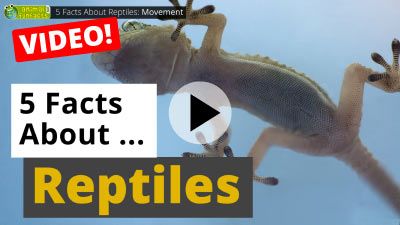Video: All About Animal Senses - Eyesight, Hearing, Taste and Smell
Which animal has the best eyesight and the best sense of hearing, taste, and smell? In our knowledge video you will find out.
(Video opens on YouTube)
Here we offer a transcript of the video:
Which Animals Have the Best Senses?
We bet you will be surprised which animals actually have the best senses. We have sorted them for you into categories:
Which Animal Has the Best Sense of Taste?
The sense of taste depends on the number of taste buds. Humans have about 2,000 to 5,000 taste buds. The wels catfish does not only have taste buds in its mouth but all over its body. Cats are very picky when it comes to food. But do they have a good sense of taste? THIS animal is dramatically underrated! The cow has five times as many taste buds as any human. Which one of the three has the best sense of taste? The wels catfish, the cow, or the cat?
The wels catfish has the most taste buds: 250,000!
Which Animal Has the Best Sense of Smell?
The sense of smell depends on two factors: the olfactory cells and the olfactory receptors. The more olfactory cells you have, the better you can perceive smells. The number of olfactory receptors determines how good you are at distinguishing between different smells:
Olfactory cells = „I can smell something at a distance of 5 miles (8 km).“
Olfactory receptors = “The fries over there are salted.”
The animal that can smell things at the longest distance, is the eel. It has one billion of olfactory cells. And what about the olfactory receptors? Dogshave more than twice as many olfactory receptors as humans. Rats have an even better sense of smell. Therefore, we do not only have detection dogs but also detection rats. This is true! Elephants also have a very fine nose – particularly for water. Even if the next waterhole is 5 miles (8 km) away, they can still sense its smell. Ok, which animal has the most sensitive nose? Is it the dog, the elephant, or the rat?
Of all animals, the elephant has the best sense of smell. It has 1,948 olfactory receptors.
Which Animal Has the Best Sense of Hearing?
Or to put it more precisely: Which animal can hear the highest frequencies? In this case you have to measure the number of sound waves per second. The measuring unit for this is Hertz (Hz). Of course, almost everybody knows that the bat can hear higher notes than humans. And under water? Here, the dolphin has the best sense of hearing. What about moths? Do they have any sense of hearing at all? We will see! Which animal has the best sense of hearing? The bat, the dolphin, or the moth? What a surprise!
Of all animals, the wax moth can perceive the highest frequencies. 300.000 Hertz!
Find out more: Animals with an Amazing Sense of Hearing
Which Animal Has the Best Eyesight?
A difficult question! Are we talking about the vision during the day? Or at night? Or do you mean the sharpest vision or being able to perceive the largest number of colors? Even though owls have good eyesight at night – the carpenter bee has the most sensitive eyes in the world. The light of the blinking stars in the sky are sufficient for the carpenter bee to navigate.
Birds of prey have the sharpest vision and are the best in spotting objects that are far away. They can even see a little mouse at a distance of one mile (1.5 km).
The animalfunfacts Roundup!
The wels catfish has the best sense of taste. The elephant has the most sensitive nose. The bee moth has the best ears, and the carpenter bee the most sensitive eyes.









